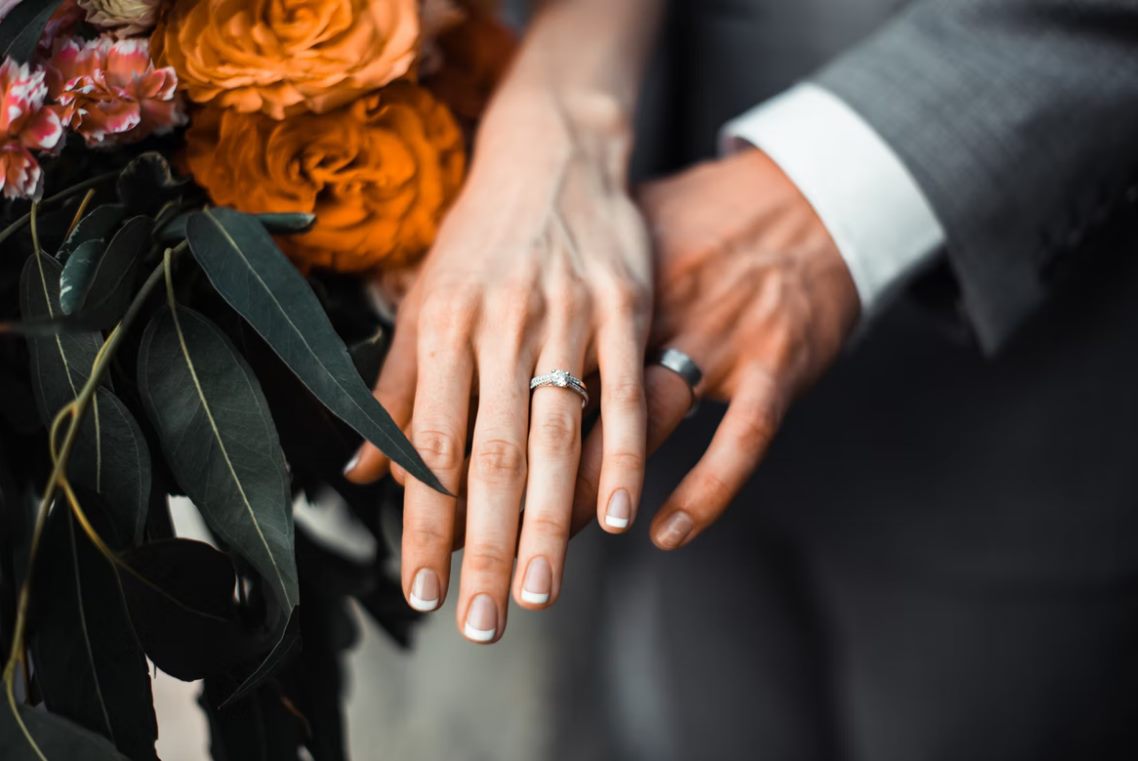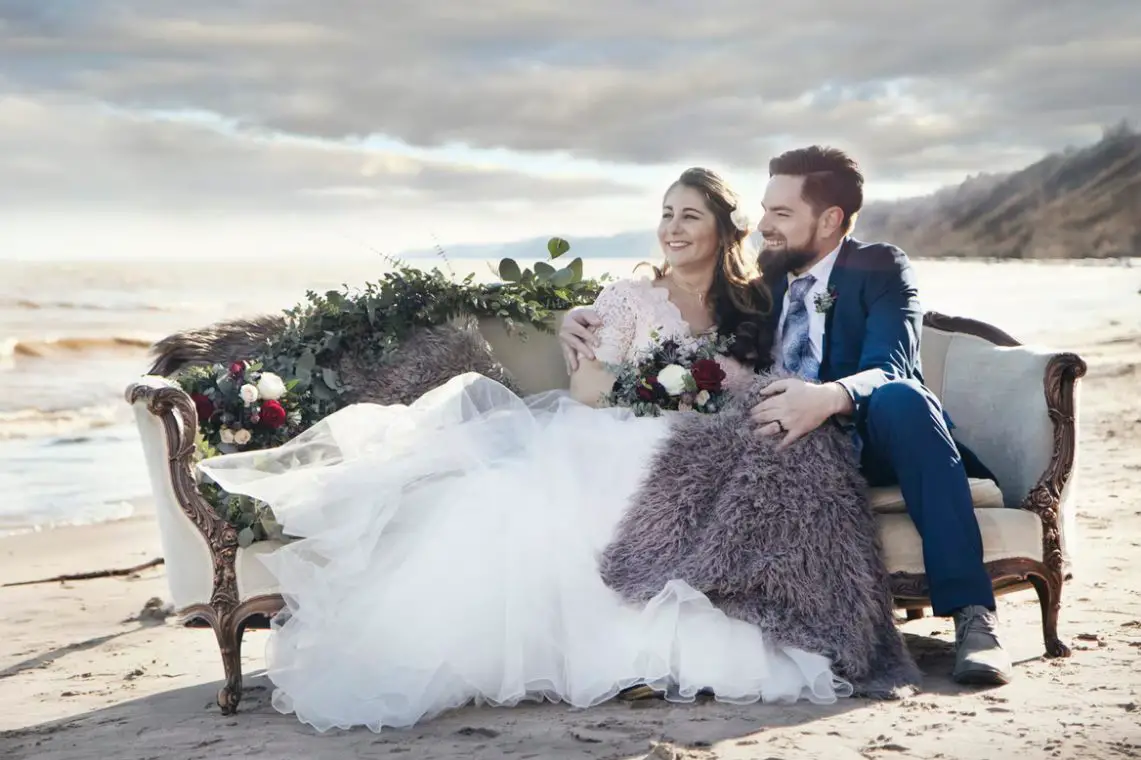Photographing a wedding reception with confidence and creativity takes more than just a good camera; it requires planning, preparedness, and an eye for detail.
From capturing candid moments to documenting key events, each shot tells a part of the couple’s story.
This guide breaks down essential techniques to ensure you’re ready for anything—from low light to unexpected changes—so every frame reflects the energy and beauty of the celebration.
Let's get straight to the point
Successfully photographing wedding receptions requires a mix of preparedness, creative techniques, and strong coordination with the couple and planner.
Prepare your equipment thoroughly with backup batteries, memory cards, and lighting options. Arrive early to capture detailed shots of the venue setup.
Use a shot list to ensure essential photos, and adjust staging to enhance composition. Master lighting techniques for low-light and mixed settings, and capture key events like the first dance and cake cutting.
Incorporate candid shots of guests and get creative with angles and slow shutter speeds for unique effects.
Stay organised with a timeline, have a backup plan for unexpected changes, and consider shadowing an experienced photographer for hands-on learning. These steps create a cohesive, vibrant story of the couple's celebration.
1. Prepare Your Equipment Thoroughly
It is essential to be fully prepared with the right equipment and backups. Before the event, ensure you have all the gear in top shape.
- Camera and Lenses: Bring a reliable camera with at least two lenses—a fast prime lens (50mm or 85mm) for low-light conditions and a wide-angle lens to capture the venue.
- Extra Batteries and Memory Cards: Always have spares. Reception photography can involve continuous shooting, so backup power and storage are essential.
- Tripod and Lighting Gear: Bring a tripod for stable shots and additional lighting (such as LED lights or an external flash) for dim venues.
2. Arrive Early To Capture Venue Details
Arriving before guests gives you time to capture the setup, decor, and any special touches the couple has arranged.
- Wide Shots of the Room: Start with wide-angle shots of the entire space to give an overview of the setting.
- Close-Up Details: Photograph the sweetheart table, centrepieces, place cards, and any decorative details, such as floral arrangements or candles.
- Personalised Elements: Focus on items that reflect the couple’s personality, such as guest books, engagement photos, or custom signs.
3. Work With A Detailed Shot List
A clear shot list ensures you capture all the essential images the couple wants, helping create a comprehensive story of the day.
- Essential Reception Shots:
- Entrance Details: Capture any signs or keepsakes at the entrance.
- Table Settings: Include centrepieces, plates, glassware, and decorative touches.
- Seating Arrangements: Photograph place cards' entire setup and close-ups, especially for family or close friends.
- Cake and Dessert Table: Get shots of the cake, dessert table, or candy station.
- Dance Floor: Documenting the dance floor and capturing the guests' dancing is essential for lively memories. Sticking to your list will ensure that you include all key elements.
4. Use Staging To Improve Composition

Staging involves arranging items to create a more polished, cohesive look. Simple adjustments can make a big difference in your shots.
- Rearrange Small Items: Adjust objects like table numbers, salt shakers, and candles to create balance.
- Lighting the Candles: If candles are part of the decor, light them for a warm glow.
- Remove Clutter: Remove distracting elements, like purses or extra chairs, to keep the focus on the decor.
Note: Always return items to their original positions once your shots are complete.
5. Master The Use Of Light In Varied Conditions
Reception lighting can be challenging due to dim or mixed lighting. Understanding how to work with natural light, ambient light, and flash is critical.
- Bounce Flash Off Ceilings: If the ceiling is white, bounce flash off it for soft, even lighting.
- Use External LED Lights: For darker venues, a small LED light can help highlight details without overexposing them.
- Natural Light: Use natural light when possible, especially to capture the colours and textures of decor and florals. Tip: Use a fast lens and stabilise your camera with a tripod for low-light shots.
6. Capture Key Reception Events
Certain moments are must-capture events at any reception. Document each one as they add to the day's story.
- Grand Entrance: The couple’s entrance sets the tone for the evening. Position yourself where you have a clear, unobstructed view.
- First Dance: Capture wide shots and close-ups of the couple’s first dance.
- Parent Dances: These are often sentimental moments—capture both the dancing pairs and guests' reactions.
- Cake Cutting and Toasts: Get close-up shots of the couple cutting the cake and any toasts or speeches.
- Bouquet and Garter Toss: These can be high-energy moments, so be ready to snap multiple shots to capture expressions and action.
- Dancing: Capture candid moments on the dance floor, especially with family members, children, and close friends.
7. Get Creative With Angles And Perspectives
Using varied angles and perspectives makes your shots more dynamic and visually interesting.
- High and Low Angles: Shoot from above to capture large group scenes or try a low angle to make decor elements appear larger.
- Close-Ups and Portraits: Use close-ups for emotional moments, like laughter or a heartfelt hug.
- Depth of Field: Use a shallow depth of field to focus on specific details and blur the background, making the subject pop.
8. Plan For Outdoor And Indoor Scenarios
Reception venues can vary, so prepare for indoor and outdoor environments. is important
- Indoor Venues: Familiarise yourself with the venue’s layout and lighting restrictions, especially if it’s a church or heritage site.
- Outdoor Venues: Be prepared for changing weather. Bring weather-resistant gear if there’s a chance of rain and a lens hood to reduce sun glare.
Pro Tip: Use Google Maps to scout outdoor or unfamiliar venues in advance.
9. Communicate And Coordinate With The Couple And Planner
Discussing details with the couple and the wedding planner can prevent misunderstandings and help everything run smoothly.
- Timeline Review: Review the schedule to determine when each key event will occur and ensure there’s enough time for photos.
- Client Expectations: Clarify any special requests or must-have shots the couple wants.
- Planner Coordination: Work closely with the planner to ensure a smooth flow and enough time for photography during each phase.
10. Capture Candid Moments Of Guests
Candid shots add life and spontaneity to your photo collection, capturing guests' emotions.
- Natural Reactions: Focus on laughter, joy, and interactions between guests.
- Children and Families: Photograph family members, especially kids, to capture the warmth of the event.
- Dance Floor Candids: Dance floor shots bring out the energy and excitement of the reception. Use a fast shutter speed to freeze motion.
11. Use Slow Shutter Speed For Artistic Effects
Adding a few creative shots with a slow shutter speed can capture the energy and movement on the dance floor.
- Create Light Trails: Lower your shutter speed to create light trails, adding a dynamic effect to the dancing shots.
- Freeze Motion with Flash: Combining a slow shutter speed with a flash can create a balanced effect where the subject is still while the background shows motion. Tip: Practice with different settings to see what works best for the lighting conditions.
12. Have A Backup Plan For Unexpected Situations
Unexpected changes, like poor weather or last-minute schedule shifts, can affect your plans. Having a contingency plan is essential.
- Indoor Backup: In case of rain at an outdoor venue, have a plan for indoor shots.
- Extra Lighting Gear: If the lighting turns out to be dimmer than expected, have extra lighting options.
- Alternate Locations: For city venues, find additional photo spots nearby. You can do this by researching online or scouting the area beforehand.
13. Thank The Couple And Check For Last-Minute Shots

Before leaving, it’s courteous to thank the couple and ask if there’s anything specific they still want captured.
- Group Shots with Friends or Family: Sometimes, the couple may want a quick group photo with specific friends or relatives.
- Farewell Moments: Capture a few parting shots as the couple bids farewell to guests. This adds a closing note to your collection.
14. Practise And Gain Experience With A Seasoned Photographer
Working with an experienced photographer can provide you with insights that only come from hands-on experience.
- Assist a Professional: Shadowing a professional at a few weddings helps you learn the workflow and techniques for handling diverse situations.
- Learn Practical Tips: Experienced photographers often have tried-and-tested methods that can streamline your work. Note: Gaining experience as an assistant allows you to build confidence before solo taking on full wedding receptions.
15. Stay Organised And Keep A Copy Of The Timeline
Keeping a copy of the timeline on hand ensures you stay on track, capturing each event in sequence.
- Review the Timeline Regularly: Check the schedule at regular intervals to ensure you’re ready for each key event.
- Coordinate with Planners and DJs: They often know the sequence of events and can help ensure you’re in the right place at the right time.
Conclusion
Capturing a wedding reception with excellence combines thorough preparation, creative attention to detail, and strong communication.
You can confidently cover each moment by ensuring your equipment is ready, arriving early to photograph venue details, and following a detailed shot list.
Mastering lighting for diverse settings, being prepared for candid moments and key events and staying organised with a timeline allow you to adapt smoothly.
Coordination with the couple and planner helps meet their expectations, while practice and experience—especially with a seasoned photographer—strengthen your skills.
With these strategies, you’ll capture the celebration's vibrant, complete story, giving the couple memories to treasure for a lifetime.
FAQs About Wedding Photography
For weddings and hand-held shots, we advise a shutter speed of 1/100th of a second or faster. In contrast, a slower shutter speed is the complete opposite. If you lower your shutter speed, the opening and closing of your camera's shutter will take longer, which may or may not result in blurring caused by motion.
Shooting in either Shutter Priority Mode or Aperture Priority Mode has its drawbacks, thus shooting your wedding photos in Manual Mode is recommended. In addition, the camera's settings can be customised individually in manual Mode.
The Canon 50mm f/1.2L is an excellent choice for wedding photographers who need a lens with a 50mm focal length. It's a lens that'll let you capture images with a surreal, Disney-film vibe—perfect for capturing that fairytale wedding.
The goal of candid photography is to capture the subject in an authentic, unposed state. It doesn't matter if the subject is moving or not when you take a picture of them.
A 24-70mm and a 70-200mm lens are common tools for wedding photographers. These are especially useful during times of the day when the tempo of events is too fast to facilitate frequent lens changes. This is the single most important accessory for your wedding photos.

